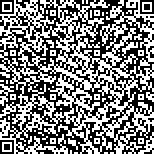| 摘要: |
| [摘要] 目的 探讨右美托咪啶(dexmedetomidine,DEX)在急性冠脉综合征经皮冠状动脉介入(PCI)术中的应用效果。方法 选取2008-09~2012-06该院确诊并采用PCI术治疗的急性冠脉综合征患者99例,依据数字随机法分为DEX组(33例)、丙泊酚组(33例)和对照组(33例)。对照组给予生理盐水输注;丙泊酚组术前给予常规丙泊酚(1~2 mg/kg)麻醉诱导治疗;DEX组给予DEX(0.5 μg/kg)麻醉诱导治疗。对所有患者采用高效相色谱分析法测定血浆中肾上腺素(E)、去甲肾上腺素(NE)水平,应用放射免疫法测定血浆中血栓素B2(TXB2)、6-酮-前列腺素F1α(6-Keto-PGF1α)水平和应用视觉模拟评分法(visual analogue scale,VAS)进行疼痛评分,统计分析三组患者麻醉前后心率(HR)、平均动脉压(MAP)和血浆中E、NE、TXB2、6-Keto-PGF1α水平、疼痛情况。结果 DEX组患者注射DEX后T2、T3、T4各时点HR均明显低于丙泊酚组,丙泊酚组患者T2、T3、T4各时点HR均明显低于对照组,差异有统计学意义(P<0.05);DEX组患者注射DEX后T2、T3、T4各时点MAP均明显低于丙泊酚组,丙泊酚组患者T2、T3、T4各时点MAP均明显低于对照组,差异有统计学意义(P<0.05);DEX组患者注射DEX后血浆中E、NE、TXB2水平明显低于丙泊酚组,丙泊酚组患者血浆中E、NE、TXB2水平明显低于对照组;DEX组血浆中6-Keto-PGF1α水平高于丙泊酚组而VAS评分低于丙泊酚组,丙泊酚组患者血浆中6-Keto-PGF1α水平高于对照组而VAS评分低于对照组,差异有统计学意义(P<0.05)。结论 在急性冠脉综合征患者PCI术麻醉诱导期间应用DEX有利于维持围手术期血流动力学平衡、抑制围手术期机体应激反应,减轻患者的疼痛感,值得临床作进一步推广。 |
| 关键词: 右美托咪啶 急性冠脉综合征 PCI介入手术 |
| DOI:10.3969/j.issn.1674-3806.2015.12.07 |
| 分类号:R 54 |
| 基金项目:广东省惠州市科技计划项目(编号:2014Y152) |
|
| The application value of dexmedetomidine in acute coronary syndrome and PCI operation |
|
LI Yu-zhong, DENG Yan-na, LONG Hong-jie
|
|
Department of Anesthesia, the Third People′s Hospital of Huizhou City, Guangdong 516000, China
|
| Abstract: |
| [Abstract] Objective To investigate the application value of dexmedetomidine(DEX) in acute coronary syndrome(ACS) and PCI operation.Methods Ninety-nine patients with ACS and PCI operation in our hospital from September 2008 to June 2012 were randomly divided into DEX group(n=33), propofol group (n=33) and control group(n=33). The control group received the therapy of saline infusion and the propofol group received conventional anesthesia induction therapy of propofol(1~2 mg/kg), and the DEX group received anesthesia induction therapy of DEX(0.5 g/kg). The levels of plasma epinephrine(E) and norepinephrine(NE) in the three groups were detected by high-efficiency chromatographic analysis method, and the levels of plasma thromboxane B2(TXB2), and 6-ketone-alpha prostaglandin F1(6-Keto-PGF1α) were detected by radioimmunity method. Visual analogue scale(VAS) was used for pain evaluation. Heart rate(HR), mean arterial pressure(MAP), VAS and the levels of E, NE, TXB2, and 6-Keto-PGF1α in plasma in the three groups were statistically analyzed before and after the surgery.Methods T2, T3 and T4 HR in the DEX group after the DEX injection were significantly lower than those in the propofol group; T2, T3 and T4 HR in the propofol group were significantly lower than those in the control group(P<0.05). T2, T3 and T4 MAP in the DEX group were significantly lower than those in the propofol group; T2, T3 and T4 MAP in the propofol group were significantly lower than those in the control group(P<0.05). The levels of plasma E, NE and TXB2 in the DEX group after DEX injection were significantly lower than those in the propofol group; The levels of plasma E, NE and TXB2 in the propofol group were significantly lower than those in the control group; The level of plasma 6-Keto-PGF1α of the DEX group was higher than that of the propofol group while its VAS scores were lower than those of the propofol group; The level of plasma 6-Keto-PGF1α of the propofol group was higher than that of the control group while its VAS scores were lower than those of the control group(P<0.05).Conclusion Using DEX in anesthesia induction is beneficial to maintaining the dynamic balance of perioperative blood flow, inhibiting the body′s stress response to the perioperative blood and relieving the pain in patients with ACS during PCI. |
| Key words: Dexmedetomidine Acute coronary syndrome PCI intervention operation |

